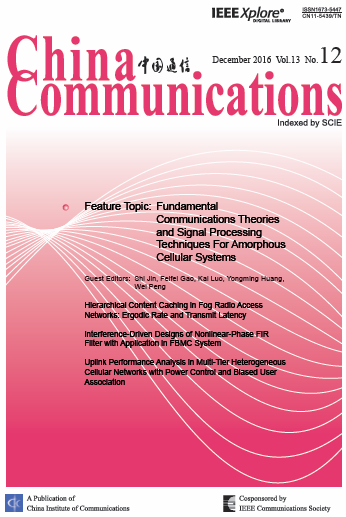SERVICES AND APPLICATIONS
Rahat Ullah, Bo Liu, Qi Zhang, Yousaf Khan, Amjad Ali, Qinghua Tian, Feng Tian, M. Saad Khan, Tabinda Salam, Sibghat Ullah, Lijia Zhang, Xiangjun Xin
2016, 13(12): 150-161.
A new scheme is offered for minimizing carrier Rayleigh backscattering (CRB) in single feeder fiber based wavelength division multiplexed passive optical network (WDM-PON). The proposed scheme is based on single side band carrier suppressed (SSB-CS) signal, both at network and receiver sides, used for the first time at optical line terminal (OLT) and optical network unit (ONU) sides. We use dual-drive Mach-zehnder modulator (DD-MZM) for generating SSB-CS signals, which decreases the expense per bit in full transmission. SSB-CS mitigates CRB, both at OLT and ONU sides, because of having no chance of reflections from the carrier. Since no extra dedicated RF or laser source is used at ONU side, we thus achieve cost effective colorless WDM-PON system. Suppressed signals from four channels, each of 10 Gbps, are multiplexed before injecting into the fiber span of 25 km at OLT. At ONU side, half of the downlink power is used for re-modulating the data signal. The simulation results show an error free transmission. Moreover, the detailed power budget calculations show that the proposed scheme can be sought out for splitting ratio up to 128. Hence it offers enough system’s margin for unseen losses.
